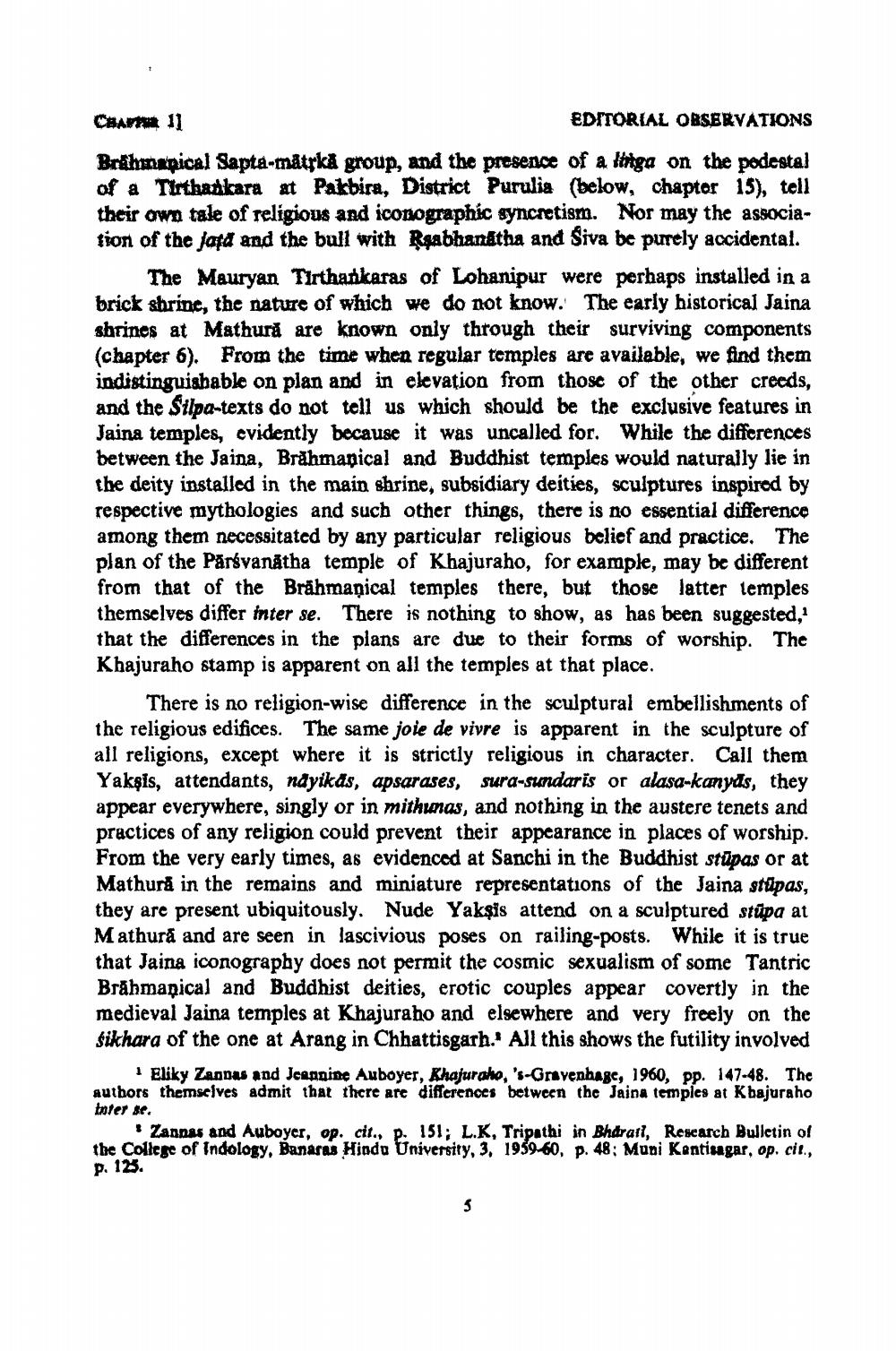________________
EDITORIAL ORSERVATIONS
Brahmapical Sapta-tåtrk, group, and the presence of a larga on the podestal of a Turthaskara at Pakbira, District Purulia (below, chaptor 15), tell their own tale of religious and iconographic syncretism. Nor may the association of the data and the ball with Rrabhanátha and Siva be purely accidental.
The Mauryan Tirthankaras of Lohanipur were perhaps installed in a brick shrine, the nature of which we do not know. The early bistorical Jaina shrines at Mathură are known only through their surviving components (chapter 6). From the time when regular temples are available, we find them indistinguishable on plan and in elevation from those of the other creeds, and the Silpa-texts do not tell us which should be the exclusive features in Jaina temples, evidently because it was uncalled for. While the differences between the Jaina, Brahmapical and Buddhist temples would naturally lie in the deity installed in the main shrine, subsidiary deities, sculptures inspired by respective mythologies and such other things, there is no essential difference among them necessitated by any particular religious belief and practice. The plan of the Parsvanátha temple of Khajuraho, for example, may be different from that of the Brāhmaṇical temples there, but those latter temples themselves differ inter se. There is nothing to show, as has been suggested, that the differences in the plans are due to their forms of worship. The Khajuraho stamp is apparent on all the temples at that place.
There is no religion-wise difference in the sculptural embellishments of the religious edifices. The same joie de vivre is apparent in the sculpture of all religions, except where it is strictly religious in character. Call them Yakşis, attendants, ndyikas, apsarases, sura-sundaris or alasa-kanyds, they appear everywhere, singly or in mithunas, and nothing in the austere tenets and practices of any religion could prevent their appearance in places of worship. From the very early times, as evidenced at Sanchi in the Buddhist stūpas or at Mathura in the remains and miniature representations of the Jaina stūpas, they are present ubiquitously. Nude Yaksis attend on a sculptured stūpa at Mathura and are seen in lascivious poses on railing-posts. While it is true that Jaina iconography does not permit the cosmic sexualism of some Tantric Brāhmapical and Buddhist deities, erotic couples appear covertly in the medieval Jaina temples at Khajuraho and elsewhere and very freely on the Sikhara of the one at Arang in Chhattisgarh. All this shows the futility involved
1 Eliky Zannas and Jeannine Auboyer, Khajuraho, 's-Gravenhage, 1960, pp. 147-48. The Authors themselves admit that there are differences between the Jaina temples at Khajuraho toter se
Zannas and Auboyer, op. cit., p. 151; L.K, Tripathi in Bhdrarl, Research Bulletin of the College of Indology, Banaras Hindu University, 3, 1959-60, p. 48: Muni Kentingar, op. cit., p. 123.




